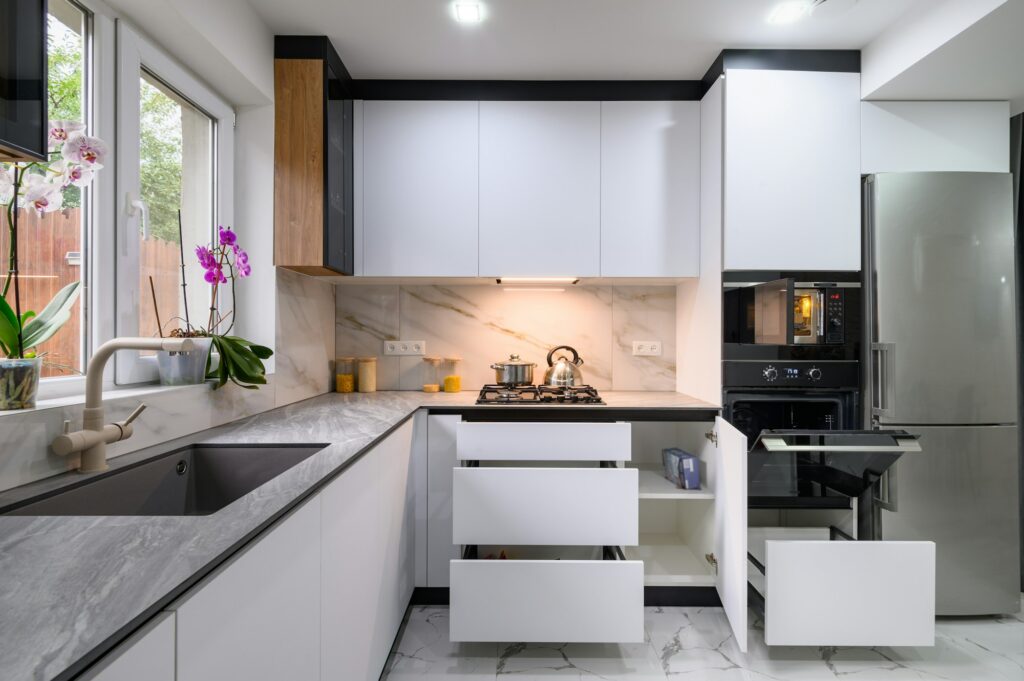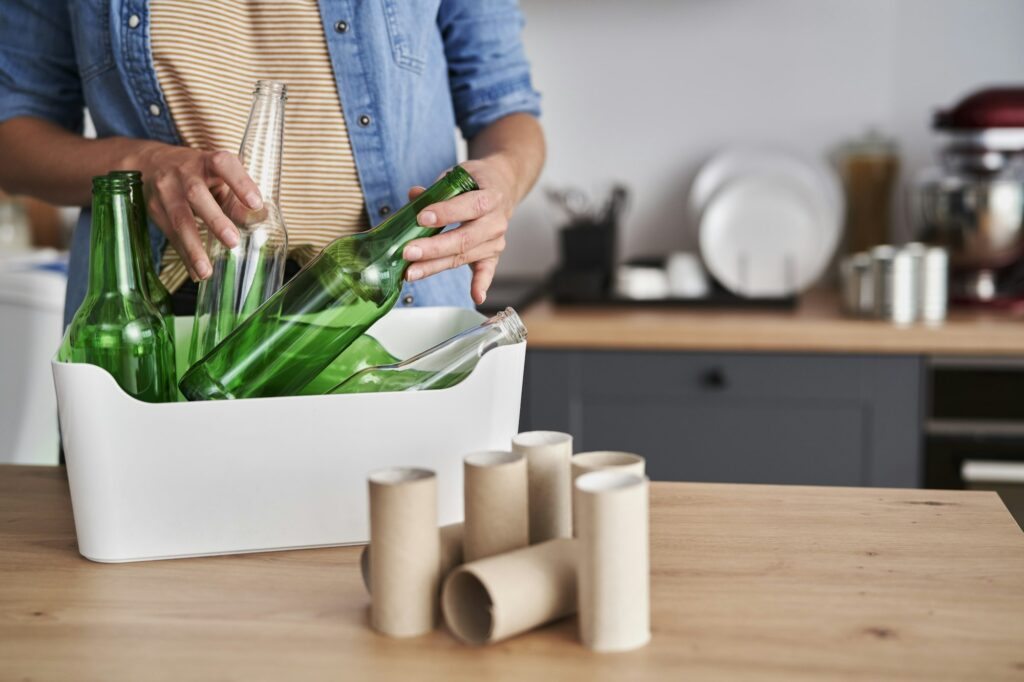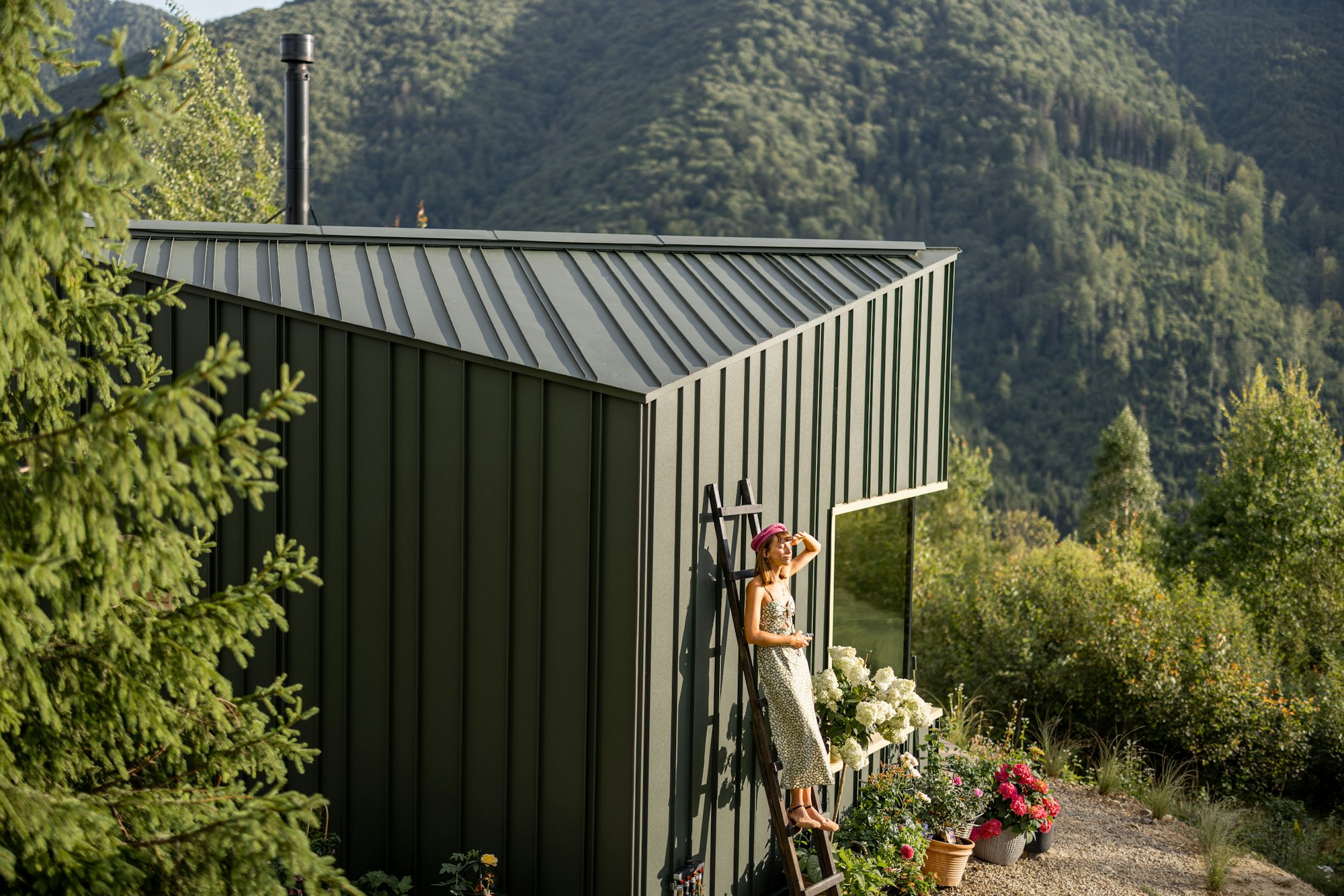
Are you ready to transform your kitchen into a haven of sustainability without compromising on style? Embracing eco-friendly kitchen design ideas can help you create a space that’s not only kind to the environment but also reflects your personal taste. Imagine cooking in a kitchen that supports your values while looking stunning. It’s easier than you think.
In this article, we’ll explore practical and stylish ways to make your kitchen more sustainable, from choosing the right materials to incorporating energy-efficient appliances.
Your kitchen is the heart of your home, where you gather, cook, and create lasting memories. Choosing a sustainable kitchen benefits both the environment and your home, making it healthier, more efficient, and aesthetically appealing.

Long-Term Cost Savings: Energy-efficient appliances and durable materials reduce utility bills and lower the need for replacements. By investing in sustainability, you’ll save money in the long run.
Eco-Friendly Aesthetic: Materials like reclaimed wood, bamboo, and recycled glass add a unique, stylish touch to your kitchen. These sustainable choices bring warmth and a natural ambiance, creating an inviting and chic atmosphere.
Choosing sustainable materials is one of the most impactful decisions for your kitchen remodel.
For more inspiration, check out this article on sustainable home materials.
When you’re ready to choose energy-efficient appliances, it’s crucial to understand what to look for. First, consider going all-electric with your kitchen gadgets. Induction ranges and convection ovens are fantastic choices as they offer superior efficiency compared to traditional gas appliances.

Switching to energy-efficient appliances is key for a sustainable kitchen. Here’s what to look for:
While the initial cost of energy-efficient appliances might be higher, the long-term savings on energy bills make it a smart investment.
Conserving water is essential for sustainability, and there are several ways to do this:
Learn more about conserving water in the kitchen with this guide.
Choosing eco-friendly flooring is vital for a sustainable kitchen.
By selecting sustainable flooring, you’ll enjoy a beautiful, functional kitchen while minimizing your environmental footprint. For more sustainable flooring options, visit Green Building Supply
Embrace smart waste management by adding a compost bin to your kitchen setup.

Additionally, look for products made from recycled content and ensure they can be recycled at the end of their life. This practice helps to reduce landfill waste and minimizes the energy consumption needed to produce new materials. Reclaiming and reusing materials, such as refurbishing existing cabinets instead of buying new ones, can also significantly minimize waste.
Shifting to plastic-free alternatives, such as reusable bags or glass storage containers, also helps reduce your kitchen’s environmental impact.
The future of sustainable kitchens is bright. Advancements in smart technologies and eco-friendly materials are making it easier than ever to design a green kitchen. For example, refrigerators that track food inventory can help reduce waste, while induction cooktops provide precision cooking with minimal energy use.
Biophilic Design: Incorporating natural light, plants, and eco-friendly materials helps create a peaceful, nature-inspired space. This growing trend in kitchen design supports both sustainability and well-being.
As sustainable kitchen options become more accessible, homeowners will be able to create spaces that are both beautiful and environmentally conscious.
An eco-friendly kitchen not only helps reduce your environmental footprint but also saves you money in the long run. Energy-efficient appliances lower utility bills, while sustainable materials can enhance air quality and reduce exposure to harmful chemicals. Additionally, a well-designed eco-friendly kitchen can increase the overall value of your home.
Start by making small changes such as switching to energy-efficient light bulbs, using water-saving fixtures, and incorporating a composting system for organic waste. You can also opt for reusable kitchenware and switch to eco-friendly cleaning products.
Yes, many affordable sustainable materials are available. For instance, bamboo is a cost-effective and renewable option for flooring and countertops. Reclaimed wood is also a great choice for cabinetry and shelving. Additionally, recycled tile or glass can add a stylish and sustainable touch to your kitchen.
When shopping for energy-efficient appliances, look for the ENERGY STAR label. This certification indicates that the appliance meets strict energy efficiency guidelines set by the U.S. Environmental Protection Agency. Features like low water usage, energy-saving modes, and efficient insulation are also key indicators of an eco-friendly appliance.
Effective waste management in an eco-friendly kitchen involves separating recyclables from non-recyclables, composting organic waste, and reducing single-use plastics. Setting up a designated recycling station and using biodegradable trash bags can make the process more efficient and environmentally friendly.
Creating a sustainable kitchen is about making conscious, thoughtful decisions that benefit both the environment and your home. By choosing eco-friendly materials, energy-efficient appliances, and water-saving solutions, you can enjoy a kitchen that aligns with your values and saves you money.
Ready to transform your kitchen? Explore more about eco-friendly design and find expert assistance with your kitchen renovation at DC Tile and Stone. Let us help you design a stylish, sustainable space that you’ll love for years to come.




